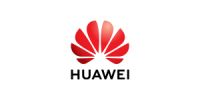As one of the world’s biggest investors in R&D, Huawei recruits hundreds of thousands of skilled employees every year. How does it ensure its hiring strategy is sustainable?
For a company whose workforce totals just under 200,000, with employees in more than 150 countries globally, it’s not surprising that telecommunications giant Huawei relies on a robust network of talent.
Speaking at the 2021 THE World Academic Summit, Afke Schaart, Huawei’s senior vice-president for global affairs, shared a few statistics: more than half the company’s employee base works in research and development; about 24,000 workers were recruited from outside China in 2020; about 6,000 employees are graduates from the world’s 200 top-ranked universities and 45 per cent of the workforce has a master’s degree.
One of the key attractions of working for Huawei is its home in Shenzhen, often described as the Silicon Valley of China. Schaart called it a “city of the future and a model for the world”, leading the way in terms of environmental sustainability, innovation and design.
“It feels a lot like a university campus although it’s one of the fastest-growing cities in the world. There’s a sense of competition, exploration, discovery and ambition and it’s truly inspiring to be here,” she said. This environment also creates fierce competition for talent.
While a sense of place is important to Huawei, the pandemic has demonstrated the possibilities of recruiting and working across geographic boundaries. “As a global company we’re trying to recruit people from all over the world, and more people have been able to come into contact with us because they did not have to fly, or live in remote areas but can connect to us through technology,” she explained. “We’re working in a more hybrid way but try to do as much face-to-face recruitment as we can, while looking after the health of our recruitment agents.”
The company is one of the biggest global investors in R&D, but that does not mean Huawei only recruits computer scientists and engineers. “We attract talent from different disciplines including the arts and social sciences. We’re interested in people having the capabilities and social skills to make a difference here,” Schaart said.
As well as the technical expertise required for emerging digital areas such as artificial intelligence, autonomous vehicles and smart cities, key focuses are ethics and diversity – and this is where skills in social sciences and policy expertise add value.
Huawei hires more than 10,000 graduates every year and relies on universities it knows well and that rank highly, but this is not a hard and fast rule. Its Seeds for the Future campaign, for example, aims to develop skilled ICT talent from local communities. Launched in 2008, so far almost 9,000 people have benefitted from the programme.
Schaart feels there is a growing role for major employers such as Huawei in breeding the next generation of talent. “Private companies are taking over that role from governments in terms of fostering education, sustainability and digital inclusion, and it’s a fair choice if you want to excel and do something good for society,” she said.
Watch the session on demand above or on the THE Connect YouTube channel.
Find out more about Huawei and higher education.













































